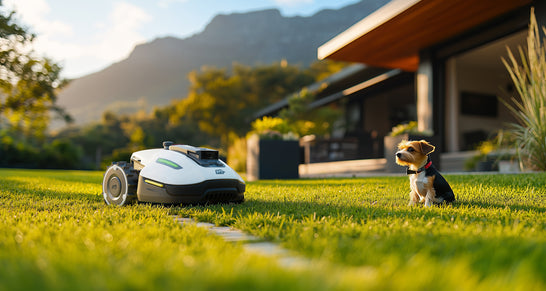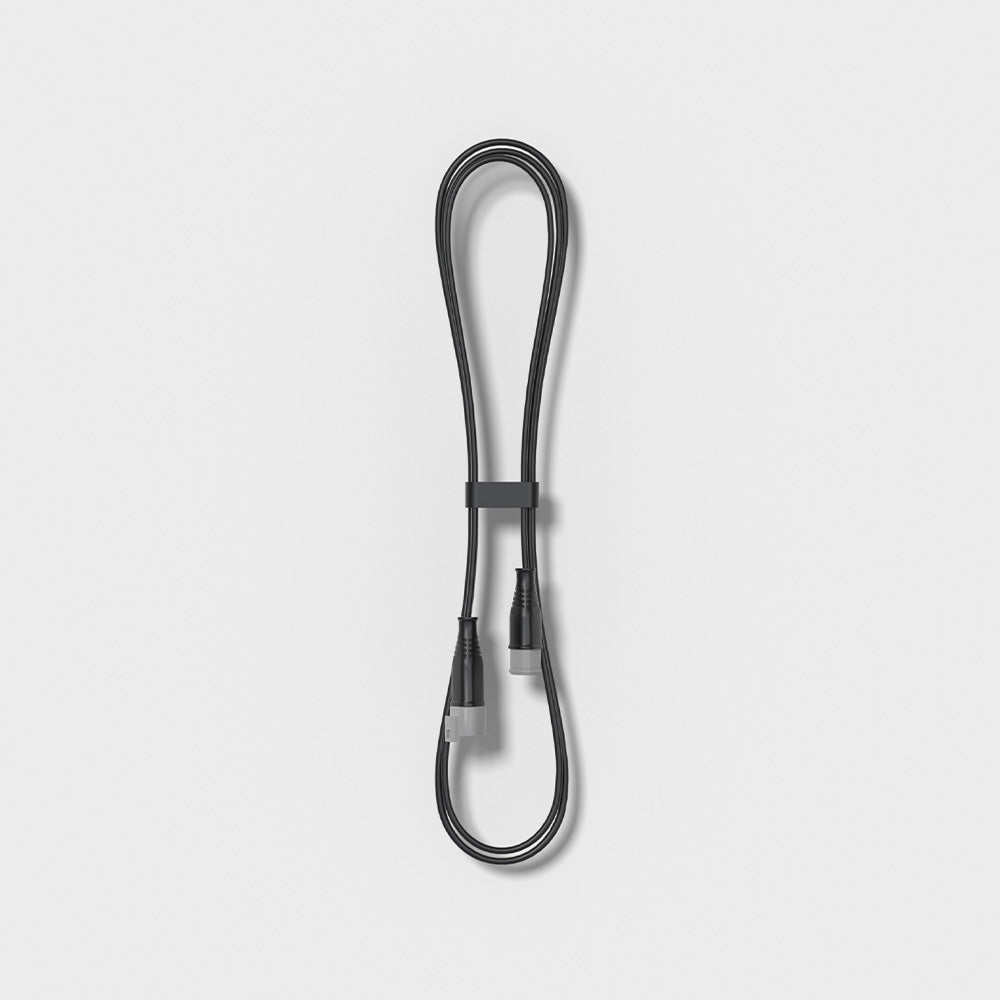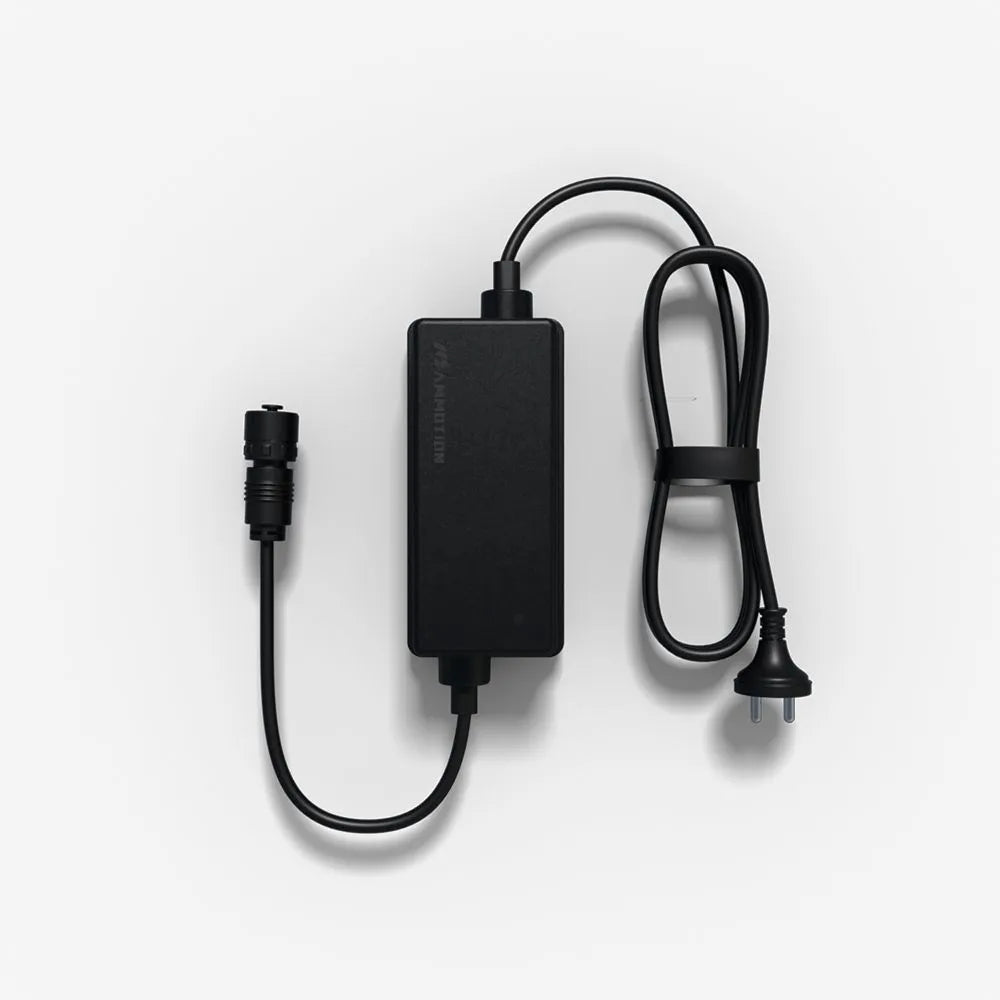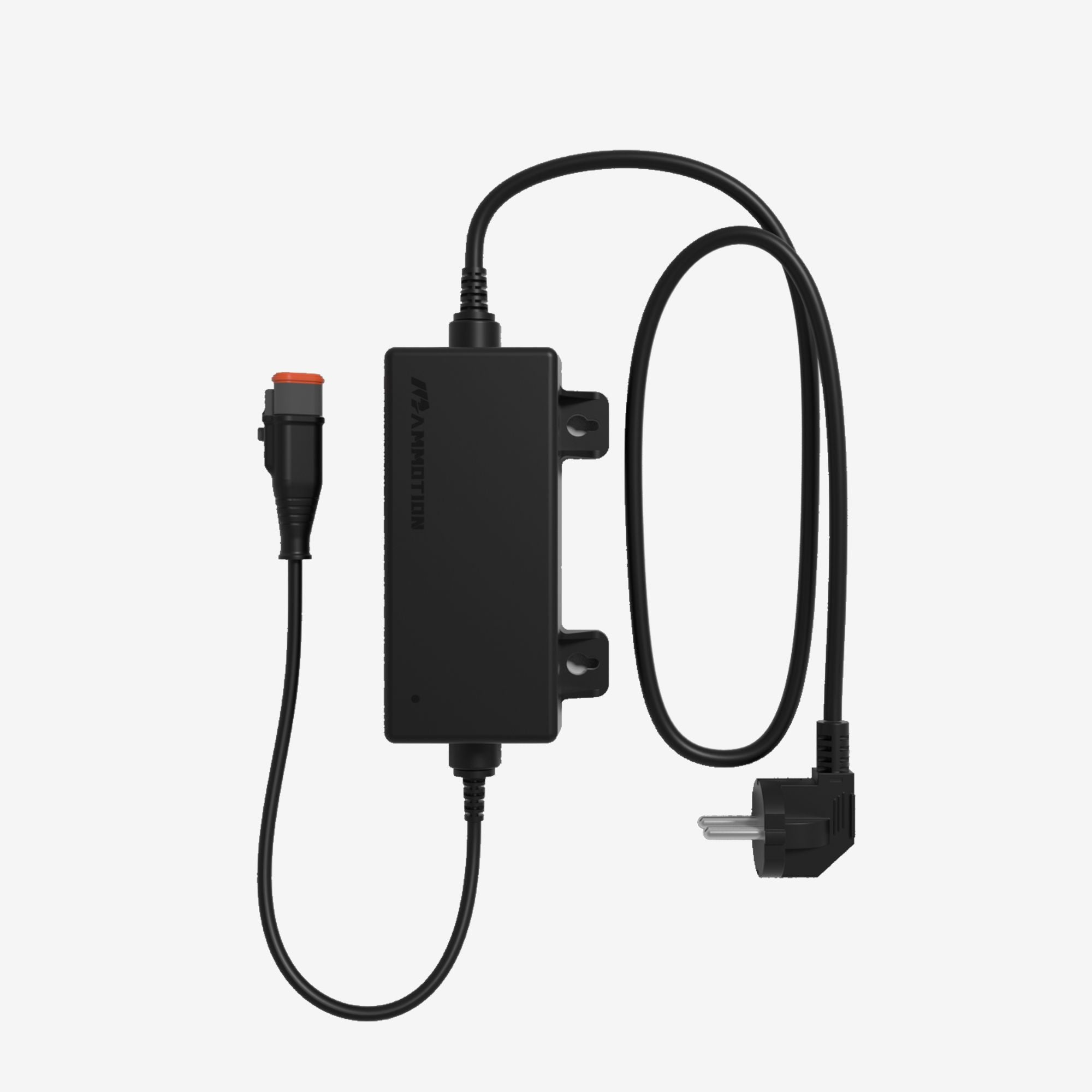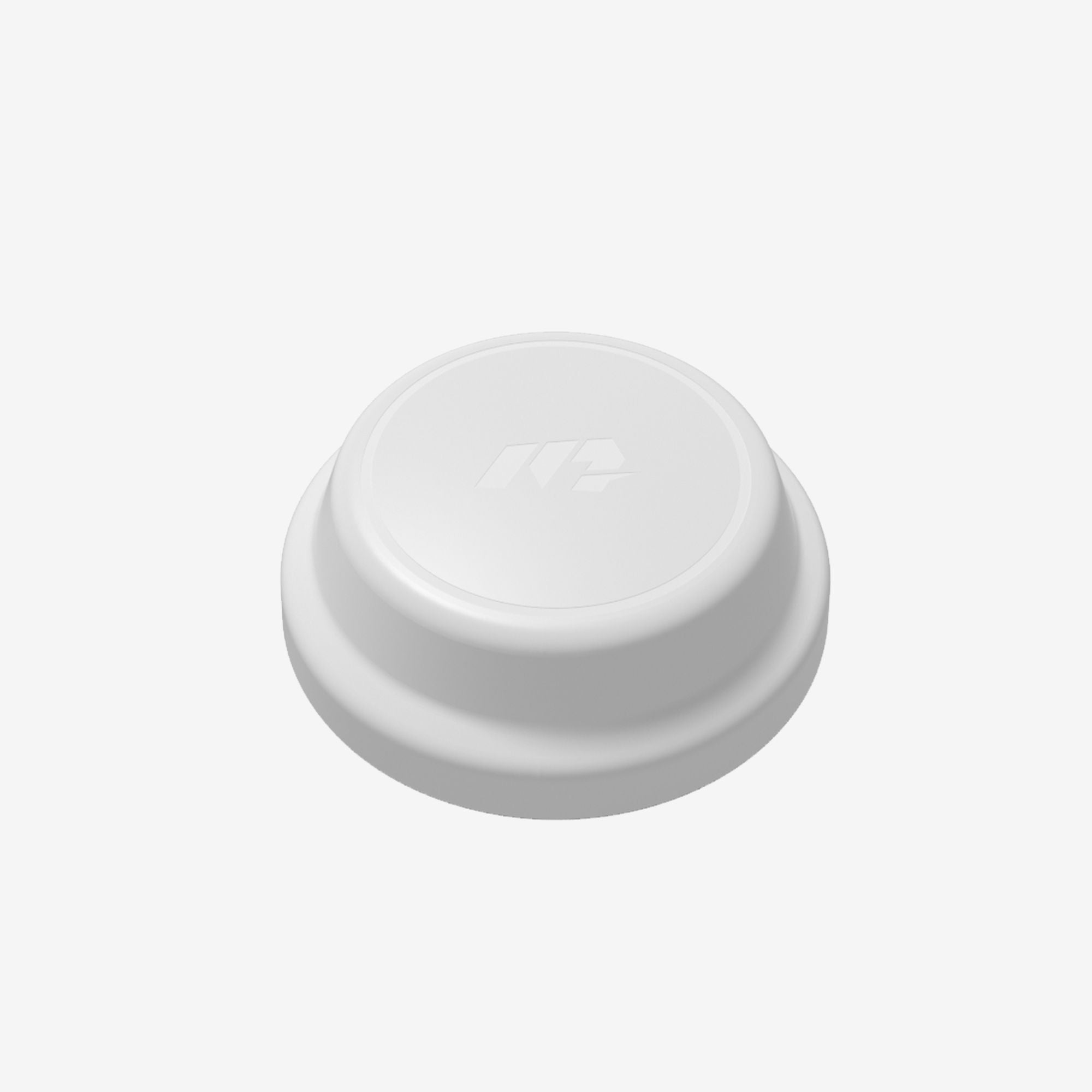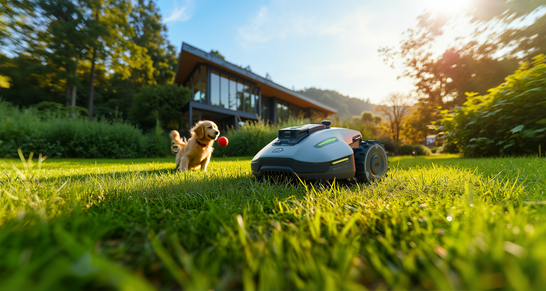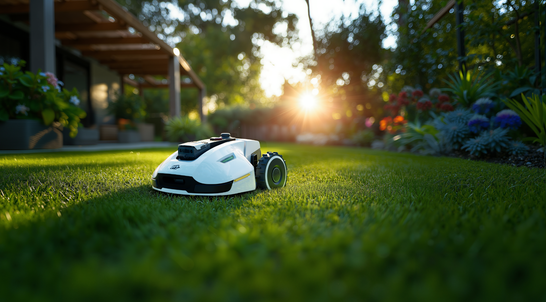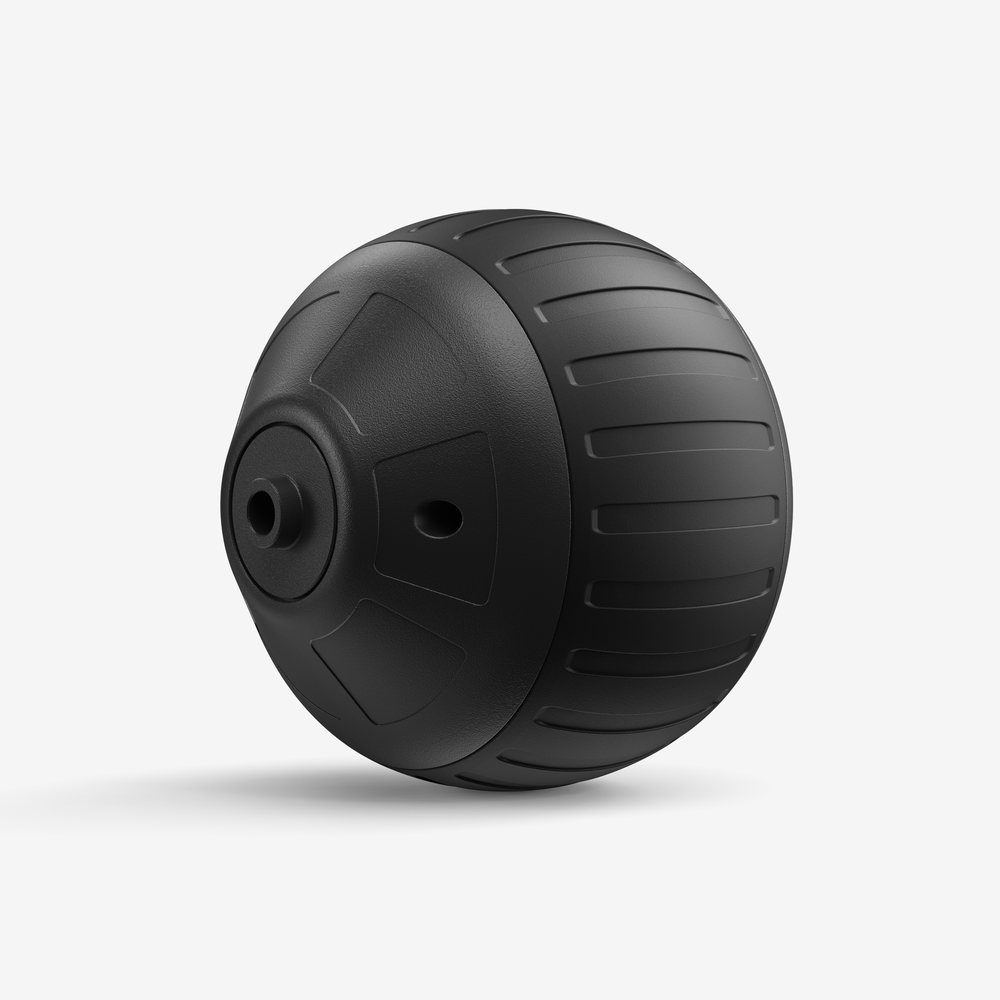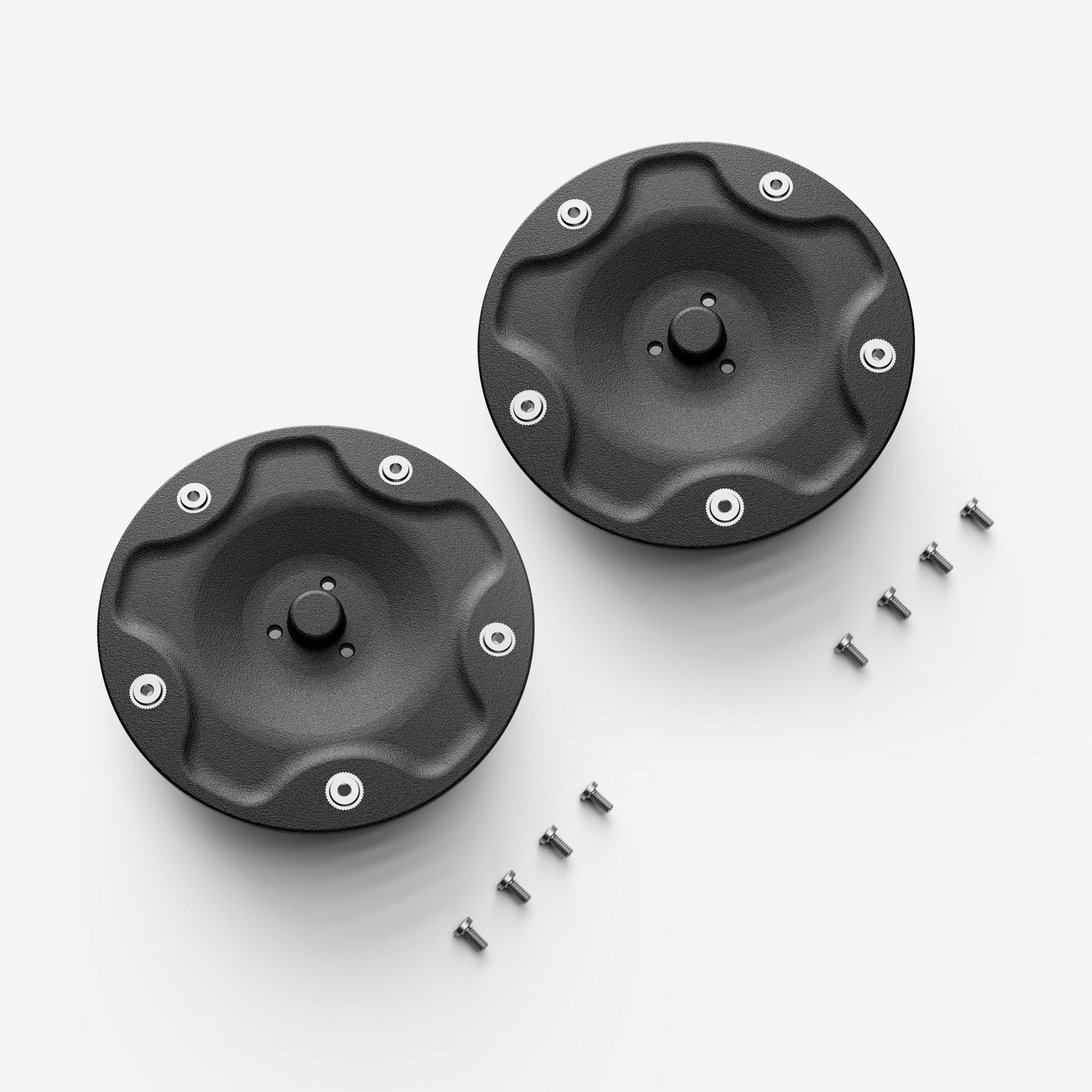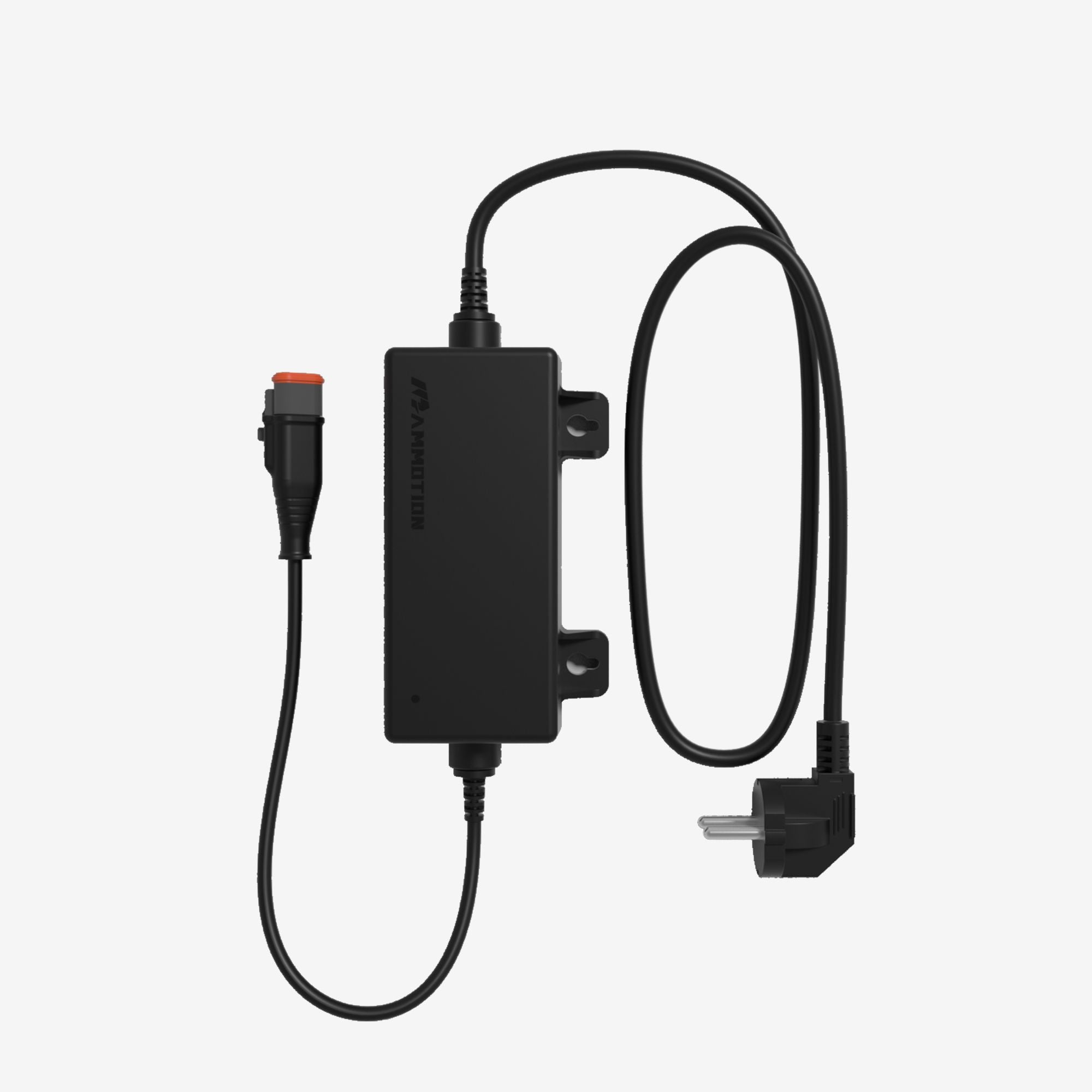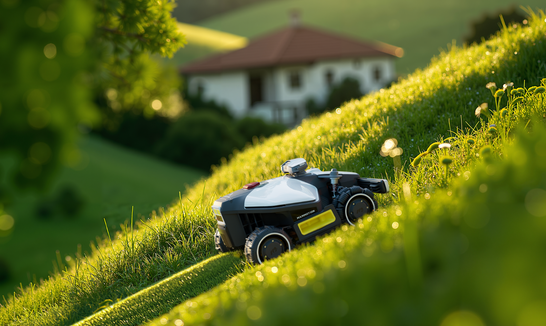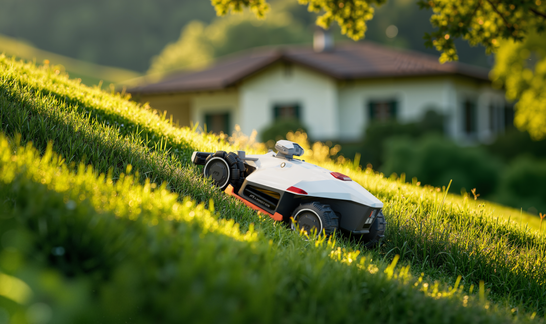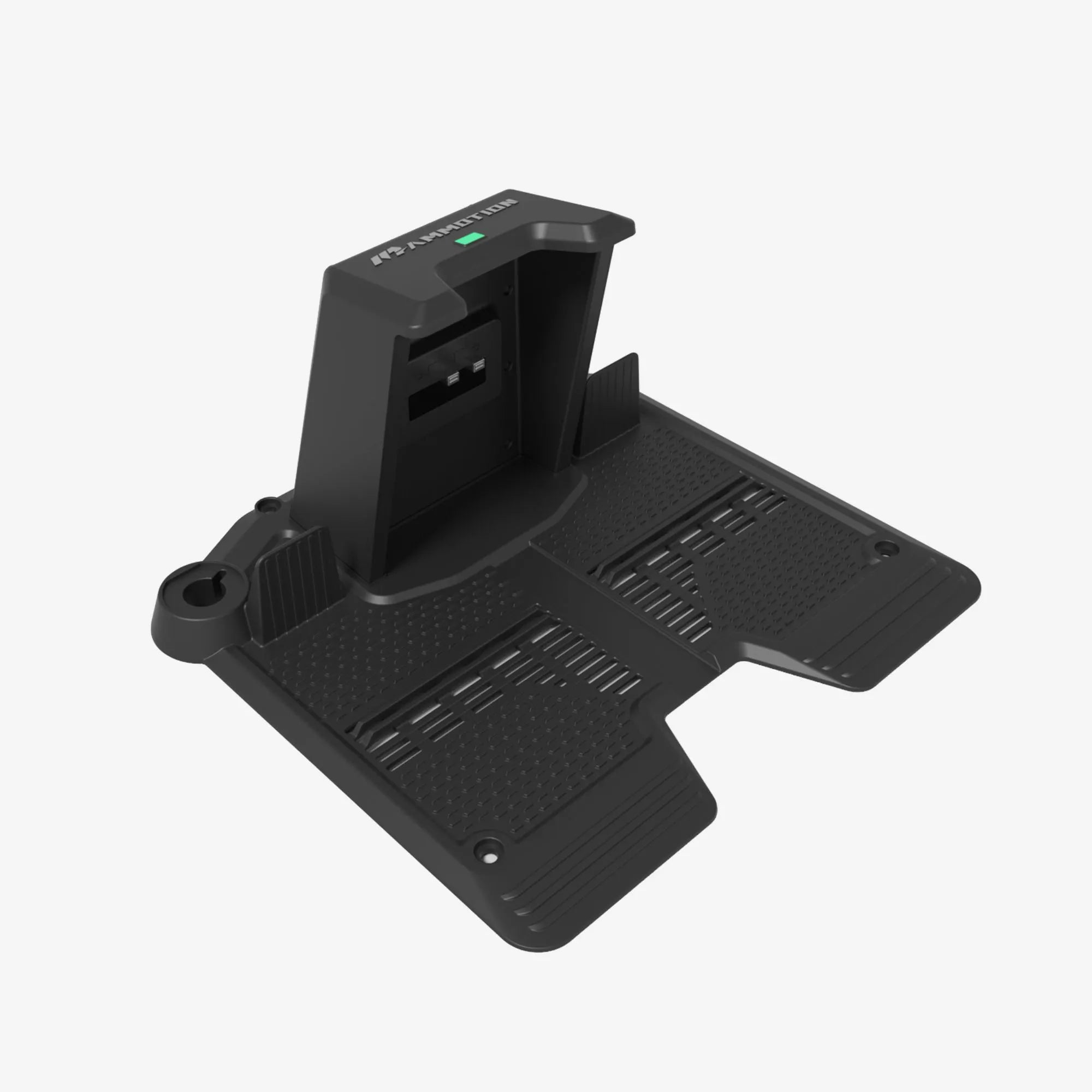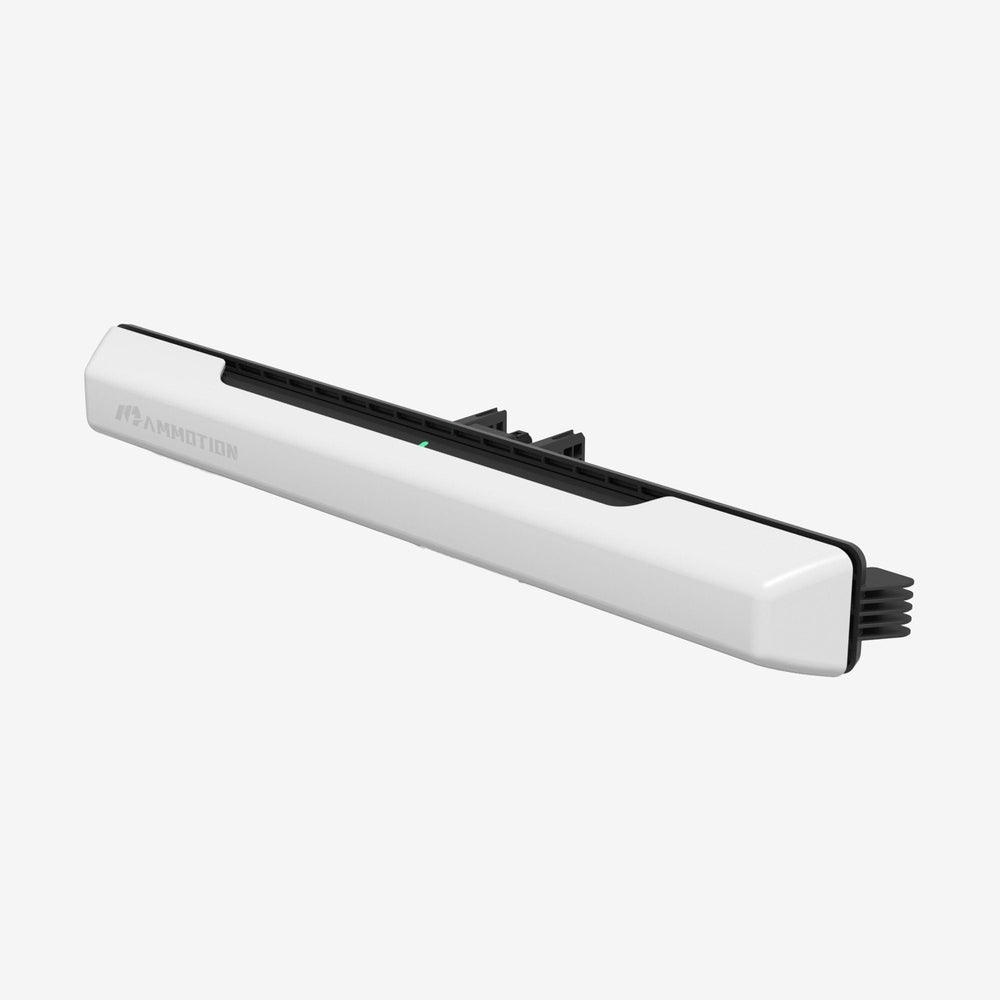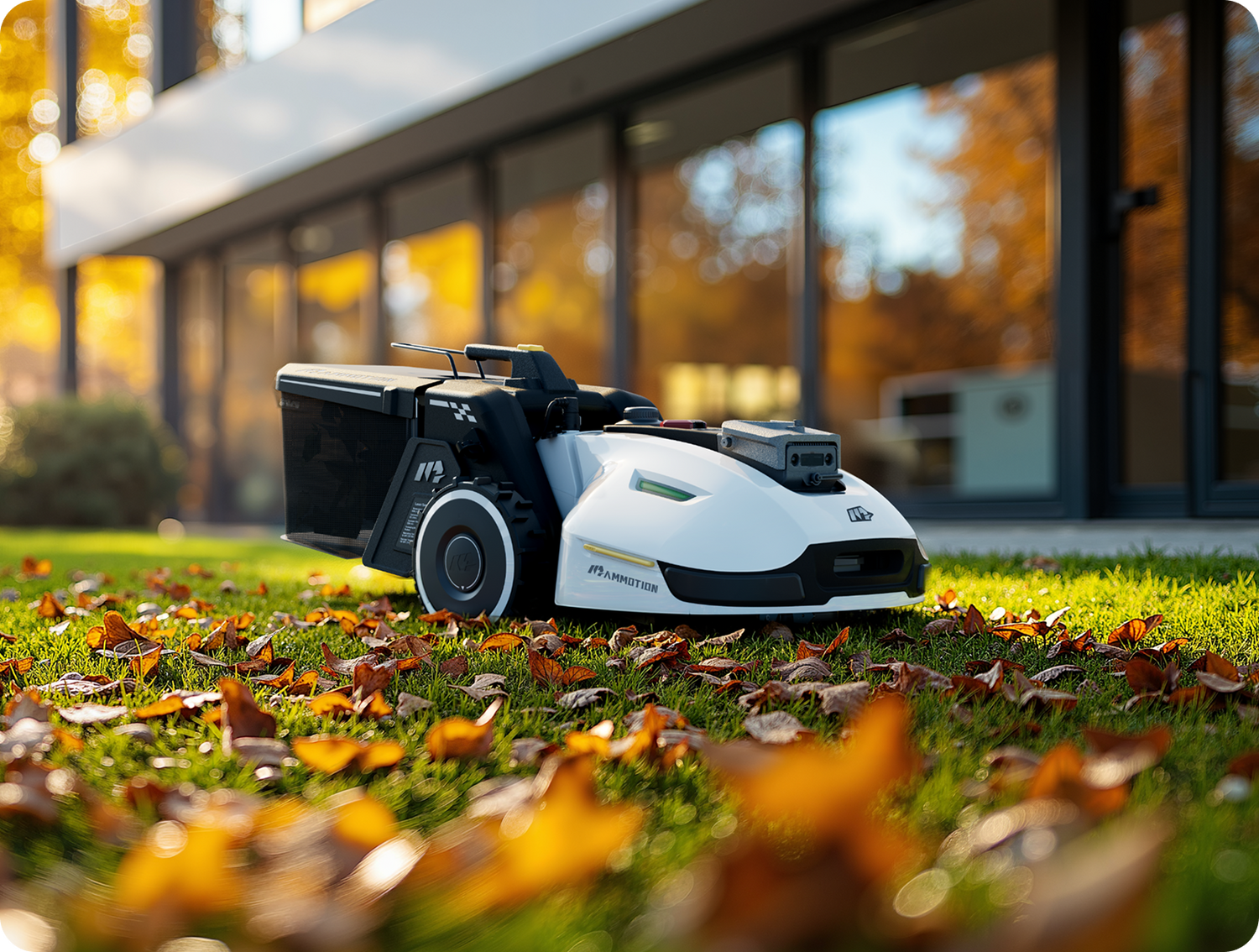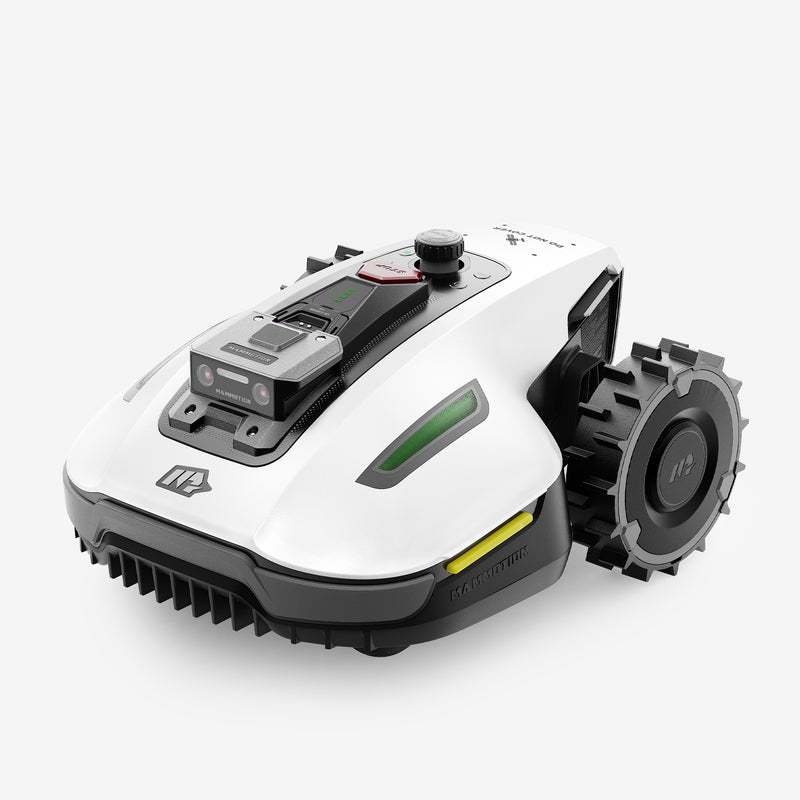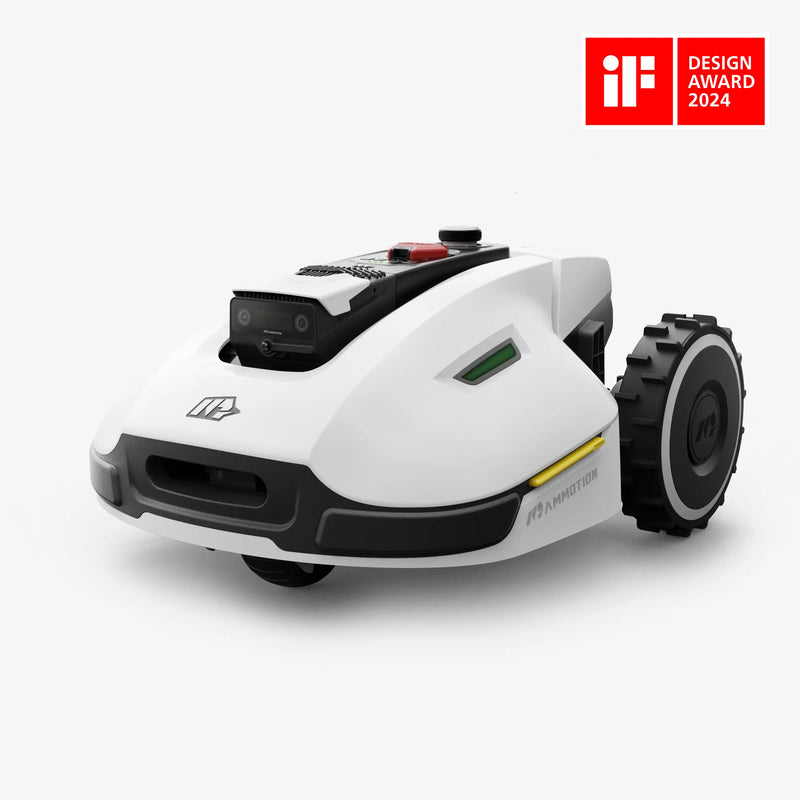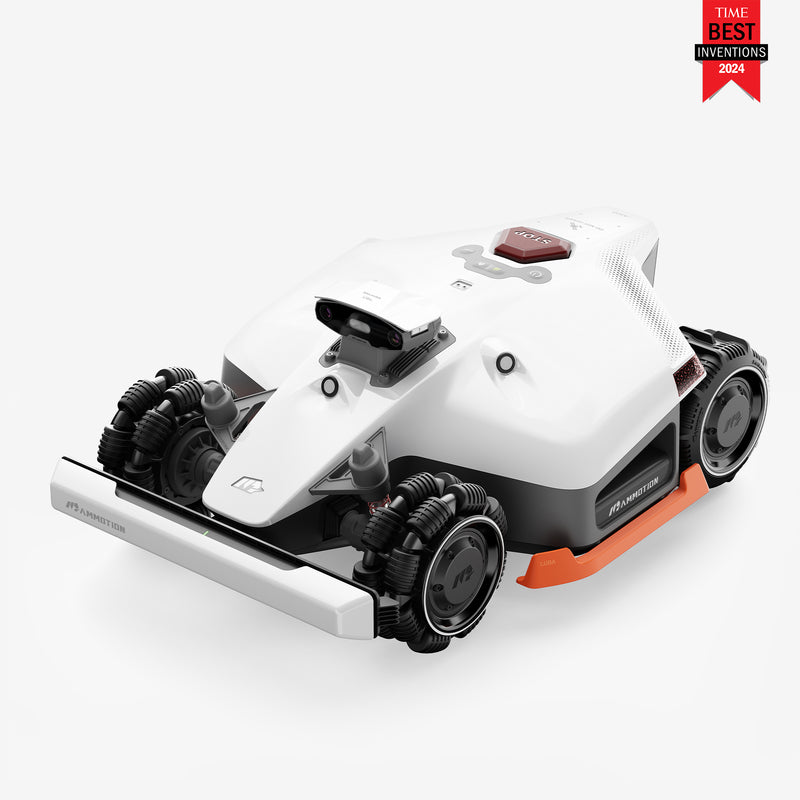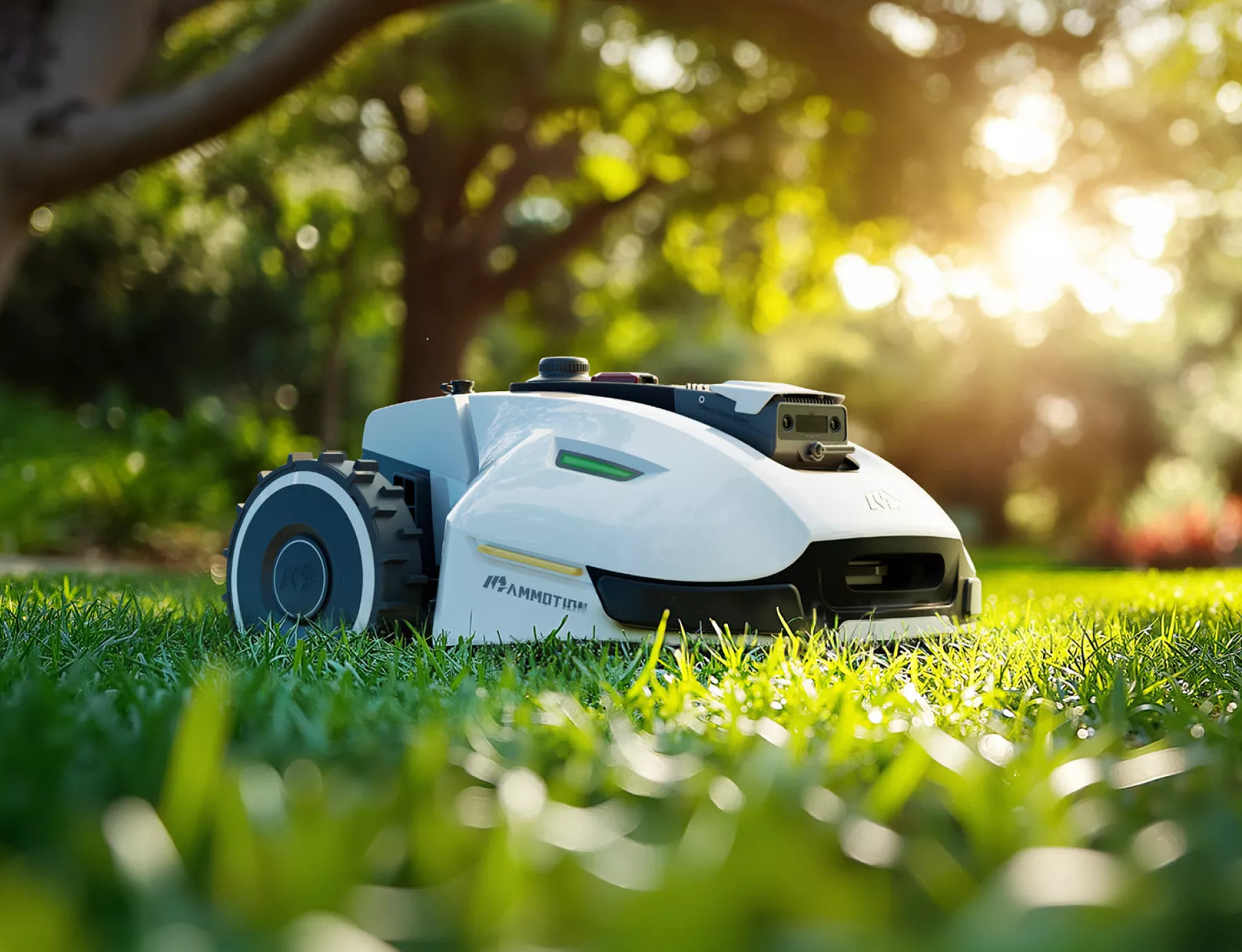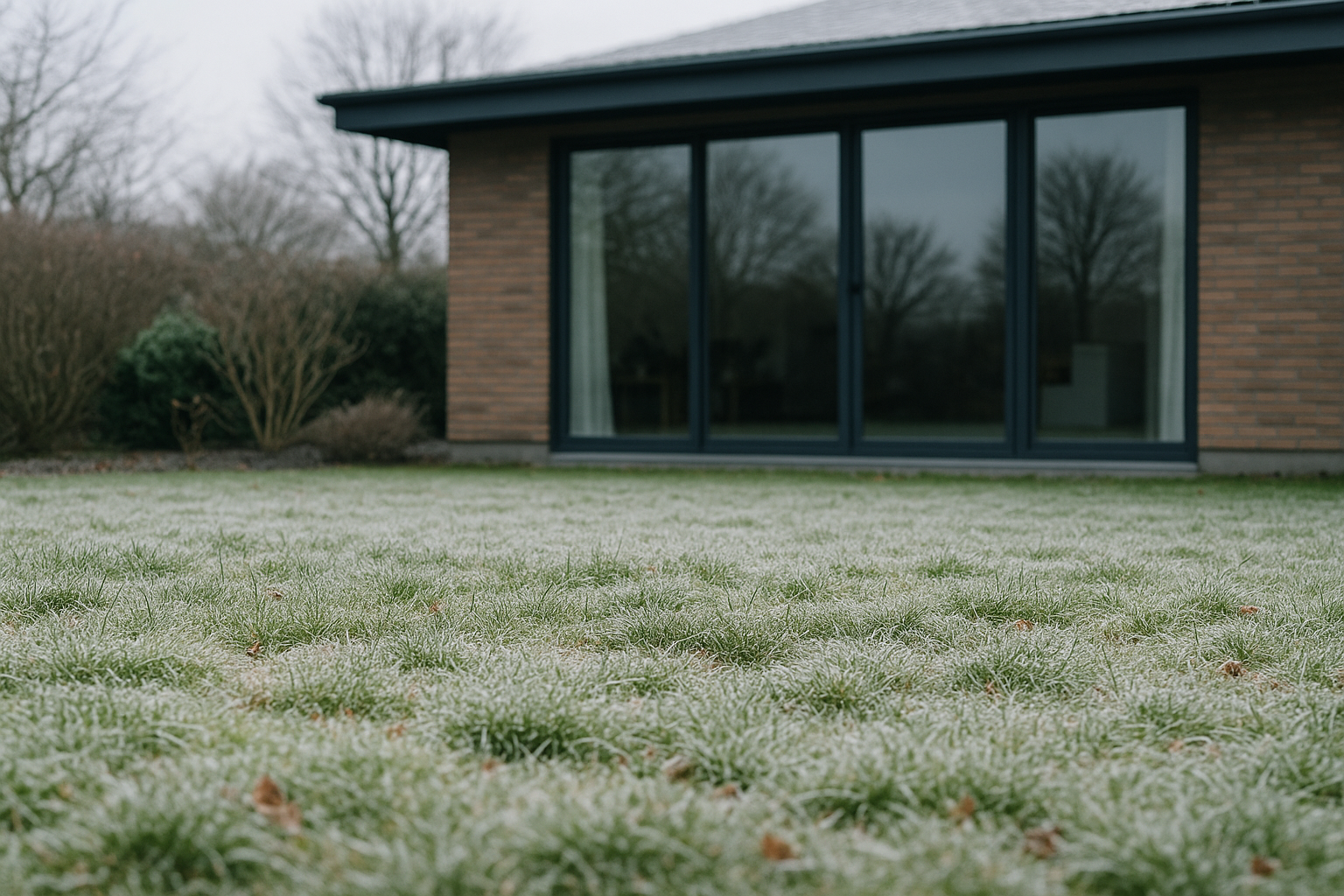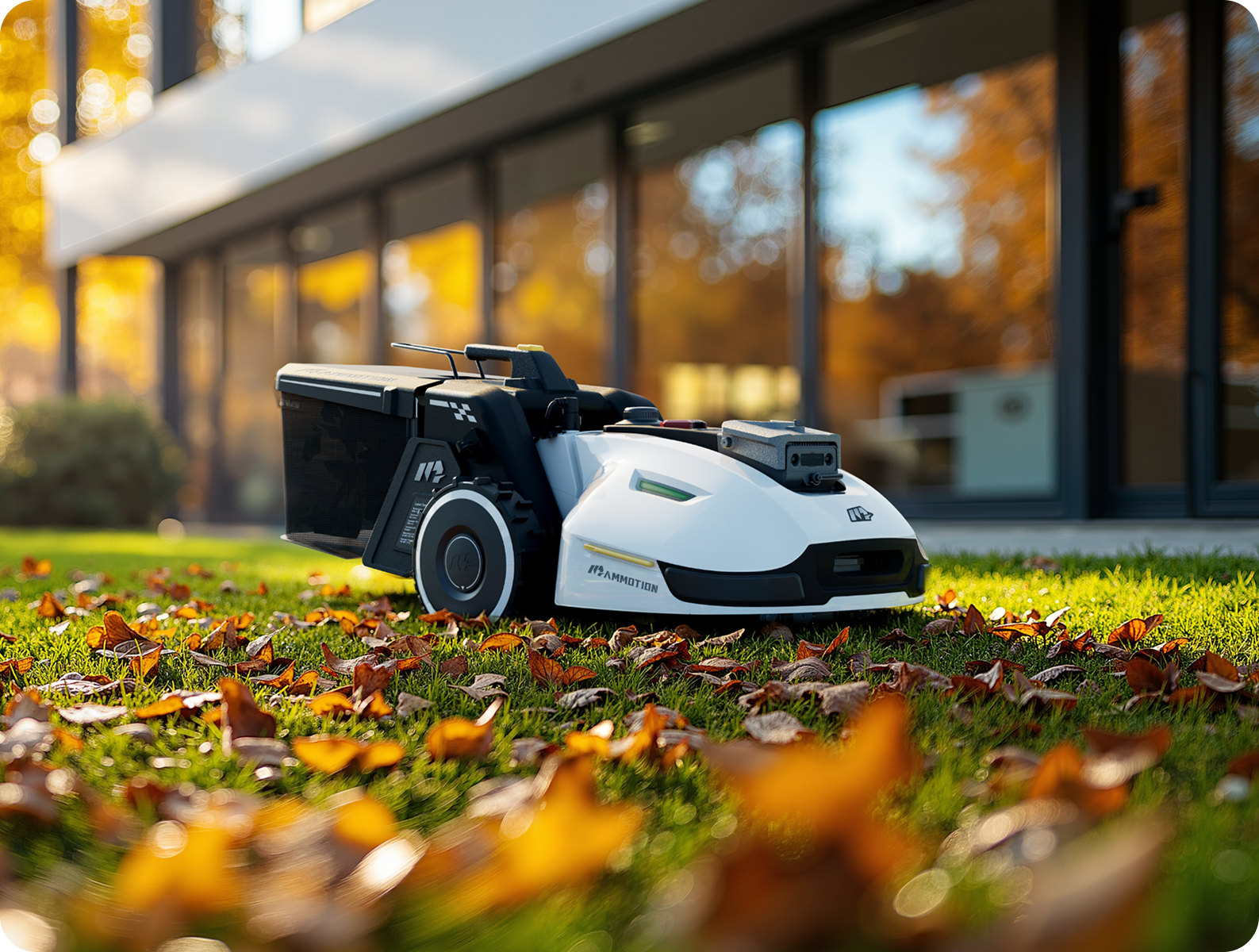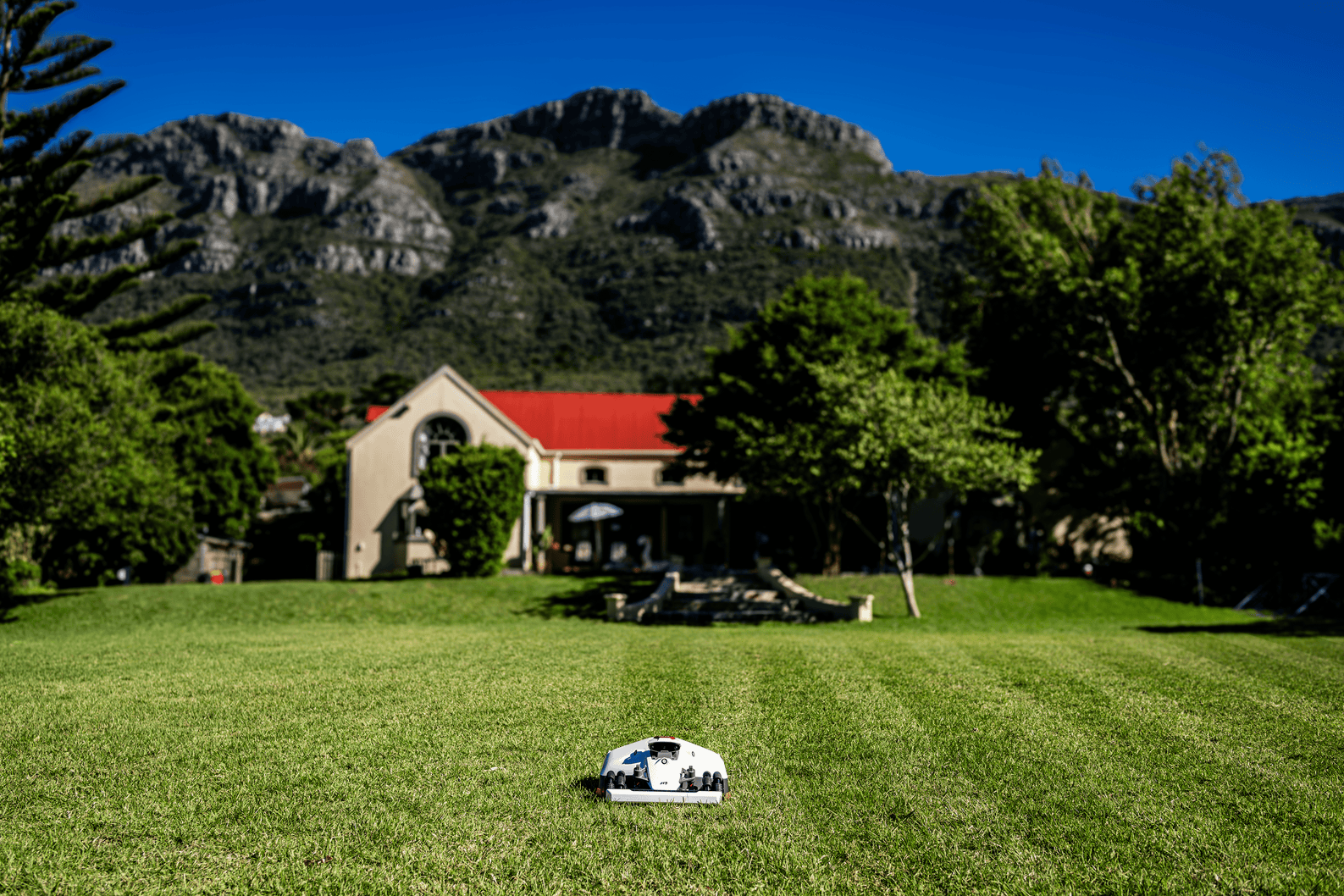As summer fades and temperatures begin to cool, autumn lawn care becomes the most important task for every UK gardener. Far from being a time to ignore your lawn, autumn is when the groundwork for next year’s lush, healthy grass truly begins.
During this transitional season, your lawn is repairing the wear and tear of summer while preparing for the frosty months ahead. Proper lawn care in the autumn involves more than just mowing — it’s about aerating compacted soil, removing moss and thatch, applying the right fertilizer, and strengthening roots before winter sets in.
Following an autumn lawn care tips ensures your grass stays strong, green, and disease-resistant through the colder months. In this article, we’ll walk you through a complete autumn lawn treatment routine, including expert mowing advice, seasonal feeding tips, and how smart, automated tools like Mammotion’s robot mowers can simplify maintenance.
Whether you’re tending a small suburban patch or a large garden estate, this guide will help you achieve the perfect lawn.
Why Autumn Lawn Care Matters More Than You Think
Many gardeners assume autumn is the time to step back, but in reality, this is when your lawn is doing its most important work underground. Autumn lawn care UK is less about growth and more about resilience — strengthening roots, repairing summer stress, and preparing for winter’s chill. The decisions you make now determine how thick, green, and disease-free your lawn will look next spring.
The Science Behind Autumn Lawn Growth
While the surface seems calm, the soil beneath your feet is buzzing with biological activity. During autumn, soil temperatures in the UK remain between 8°C and 15°C — the sweet spot for root expansion in cool-season grasses such as ryegrass and fescue.
Roots grow deeper, storing carbohydrates and potassium that act as natural antifreeze through winter. Meanwhile, soil microbes decompose leftover thatch, releasing nutrients back into the root zone. This process enhances soil aeration, improves drainage, and strengthens turf density.
Think of it as your lawn’s version of “winter training.” Every nutrient absorbed and every air pocket reopened now will translate into a thicker, greener surface when temperatures rise again in spring.
Preparing for Winter Survival
As nights get longer and frost begins to settle, your lawn gradually shifts from growth to protection mode. The aim isn’t to make it grow faster — it’s to make it tougher.
- Feed with the right nutrients:
Choose an autumn lawn treatment high in potassium and phosphorus, not nitrogen. These nutrients strengthen cell walls and root structures, improving frost and disease resistance. - Maintain airflow and drainage:
Compacted soil holds water and promotes fungal issues like Fusarium Patch. Light aeration helps roots breathe and keeps the surface drier. - idy up strategically:
Remove fallen leaves that block light and moisture exchange, and trim grass slightly higher (around 40–50 mm) before winter. Longer blades shield the crown from frost damage while still allowing photosynthesis.
Step-by-Step Autumn Lawn Care Routine
Autumn lawn care is all about preparation, not perfection. Each action — from clearing debris to adjusting mower height — helps your turf stay strong through winter.
Step 1 – Clear Debris and Fallen Leaves
Before anything else, start by clearing away fallen leaves, branches, and moss. A thick leaf layer blocks sunlight and traps moisture, suffocating your grass and encouraging fungal growth.
Use a leaf blower or rake weekly from September onwards to maintain airflow and light exposure. For smaller lawns, a robotic mower like Mammotion’s YUKA Mini can help break down lighter debris naturally through micro-mowing.
Pro Tip: Instead of binning dry leaves, compost them. Leaf mould is an excellent natural mulch and soil conditioner for the following spring.
Step 2 – Aerate and Scarify for Healthier Roots
After a long summer of foot traffic, most lawns suffer from soil compaction — especially in wetter UK regions. So can you mow in the wet and rainy Autumn season? Autumn is the perfect time to aerate your lawn, allowing oxygen, water, and nutrients to penetrate deeper.
Use a garden fork or mechanical aerator to create small holes 7–10 cm deep, every 10–15 cm apart. For heavier thatch, scarify the surface gently to remove dead material.
Why it matters: Improved airflow prevents moss buildup and promotes stronger, deeper roots — the cornerstone of effective autumn lawn care in the UK.
Step 3 – Feed the Lawn: Autumn Fertilizer Essentials
Feeding your lawn in autumn is not about fast growth — it’s about long-term health. Choose an autumn lawn fertilizer low in nitrogen (N) but rich in potassium (K) and phosphorus (P). These nutrients toughen cell walls, improve root resilience, and enhance cold tolerance.
Apply evenly after rain or watering for best absorption. In most parts of the UK, late September to mid-October is the sweet spot for feeding.
Pro Tip: Avoid high-nitrogen spring fertilizers — they’ll cause soft growth that’s easily damaged by frost and disease.
Step 4 – Overseed Bare or Thin Patches
If summer stress has left your lawn patchy, early autumn is ideal for overseeding. Warm soil and regular rainfall create perfect germination conditions.
Rake the area lightly, scatter grass seed, and press down gently to ensure contact with the soil. Keep the surface moist for 10–14 days. For small lawns, use a fine fescue mix for shade or a ryegrass blend for high-traffic areas. Regular overseeding rejuvenates your turf’s density and colour, reducing weed invasion over time.
Step 5 – Smart Mowing and Moisture Management
Many homeowners stop mowing too early in autumn, but grass still grows slowly until soil temperatures drop below 8°C. Continue light mowing every two weeks with a higher cutting height (around 40–50 mm).
Avoid mowing when the ground is saturated — it compacts the soil and damages roots.
Maintain balanced moisture by watering occasionally during dry spells, but never overwater — autumn rain is usually sufficient for most UK lawns.
Seasonal Mowing Calendar — October to December
In the UK, autumn weather varies from mild September sunshine to frosty December mornings — your mowing schedule should adapt accordingly and need relative robot lawn mower guide. The last grass cut of the year UK typically falls between late October and early November, when soil temperatures drop below around 8–10°C and grass growth naturally slows. Following a seasonal mowing plan during this period helps you balance lawn health with changing weather, preventing overcutting or unnecessary wear.
October — Slow Growth and Gentle Mowing
By October, the growing season is winding down, but most lawns still need light trimming every 10–14 days. The goal isn’t to keep the grass ultra-short but to maintain an even, tidy appearance before winter sets in.
- Cut height: Keep it between 40–50 mm to shield roots from frost and retain moisture.
- Timing: Choose dry afternoons when the grass surface is free of dew.
- Maintenance: Continue clearing fallen leaves — they can block light and invite moss growth.
If you use a smart mower like the Mammotion YUKA Mini, switch to its eco or quiet mode for infrequent mowing cycles, letting AI sensors decide when trimming is necessary. This helps conserve battery and reduce soil compaction — a key autumn lawn care tip many homeowners overlook.
November — Pre-Winter Protection
- November is the transition from active growth to dormancy. Grass blades become brittle, and cutting too short now risks exposing the crown to frost damage.
- Final mow: Perform your last cut early in the month before heavy frosts begin.
- Height: Maintain around 50 mm — long enough to protect, short enough to prevent matting.
- Clean-up: Remove debris, moss, and fallen twigs regularly to keep the surface dry and breathable.
- Feed: Apply a final autumn lawn treatment with high potassium to strengthen cell walls for cold resistance.
- Avoid walking on frozen grass, as the blades can snap and leave dark footprints that persist for weeks. If you’re using a robot mower, this is the time to clean its deck, inspect blades, and check firmware updates before winter storage.
December — Dormancy and Equipment Care
By December, growth has virtually stopped across the UK. Mowing is no longer needed unless the weather is exceptionally mild in southern regions. Instead, focus on lawn preservation and equipment maintenance.
- Leave grass undisturbed: Avoid mowing or heavy traffic on frosty mornings.
- Drainage check: Make sure rainwater isn’t pooling in low spots — use a garden fork to create small aeration holes.
- Mower storage: Clean and dry your mower (robotic or manual), fully charge the battery, and store it in a frost-free space.
- Final inspection: Lubricate moving parts and plan any blade replacements before spring.
This rest period is your lawn’s “off-season recovery.” Proper lawn care in the autumn doesn’t stop when mowing ends — it simply shifts focus to protection and readiness for next year’s growth.
Smart Lawn Care for All Garden Types
If you’re planning your last grass cut of the year, this is the perfect time to prepare your lawn for winter and ensure a healthy start next spring. Mammotion’s intelligent robotic mowers are purpose-built for every scenario — from compact city gardens to expansive countryside estates — ensuring precise, efficient, and sustainable lawn maintenance through the colder months.
Small Lawns (Under 600 m²)
For small urban gardens, autumn brings cooler temperatures, more shade, and higher humidity — conditions that slow grass growth and increase moss risk.
Smaller lawns need minimal yet consistent care, especially when space and time are limited.
Autumn care tips for small lawns:
- Raise the cutting height to 40–50 mm to protect shallow roots.
- Mow every 10–14 days as growth slows to prevent scalping.
- Remove fallen leaves weekly to reduce fungus buildup.
- Apply a light, slow-release fertilizer once before mid-October to support root strength.
Best robot lawn mower: YUKA mini(600/800/Vision 700)
The Mammotion YUKA Mini is purpose-built for compact urban gardens. Weighing only 10.6 kg and rated IPX6 waterproof, it’s lightweight, weather-resistant, and easy to store — ideal for patios, balconies, or small sheds.
Key Features & Advantages
- Compact & Lightweight: Only 10.6 kg, designed for small gardens up to 600 m².
- Wire-Free Navigation: AI Vision + RTK system enables fast, precise mapping with no boundary wire.
- Quick Setup: Ready to mow in under 10 minutes.
- Waterproof & Durable: IPX6 rating ensures performance in all weather conditions.
- Smart Animal Avoidance: Detects and avoids pets or wildlife automatically.
- App Control: Manage mowing schedules, start or pause anytime via the Mammotion App.
- Anti-Theft Protection: Built-in GPS tracking for security and peace of mind.
Medium Lawns (600 – 2,500 m²)
Mid-sized suburban gardens usually combine open grass with flowerbeds, trees, and narrow pathways. They need a mower that offers both precision and adaptability.
Autumn care tips for medium lawns:
- Enable smart adaptive scheduling that automatically adjusts to temperature and grass growth.
- Use a high-potassium autumn fertilizer to build frost resistance.
- Aerate and level any areas prone to puddling after rainfall.
- Inspect edges where weeds and moss tend to form in damp weather.
Best robot lawn mower: YUKA (1000/3000)
The Mammotion YUKA is designed for medium-sized gardens, offering the perfect blend of intelligence, efficiency, and precision. With RTK + Vision dual positioning, it delivers centimeter-level accuracy without the hassle of boundary wires.
Key Features & Advantages:
- Wire-Free Setup:RTK + Vision navigation provides centimeter-level accuracy — no perimeter wire required.
- Smart Weather Response:IPX6-rated system automatically pauses during rain and resumes when conditions improve.
- Extended Runtime:Up to 130 minutes of mowing per charge for consistent coverage on medium lawns.
- Multi-Zone Management:Supports up to 30 customizable mowing zones, ideal for front and back gardens.
- Intelligent Obstacle Detection:Recognizes and avoids toys, garden tools, and furniture for safe, worry-free operation.
- Quiet & Eco-Friendly:Operates at low noise levels while reducing emissions compared to traditional mowers.
Large or Sloped Lawns (2,500 – 6,000 m²)
Large estates and sloped terrains face greater challenges in autumn: wet soil, fallen branches, and uneven ground. These require a mower built for traction, stability, and endurance.
Autumn care tips for large or sloped lawns:
- Aerate compacted zones to improve oxygen and drainage.
- Apply a potassium-rich treatment to strengthen roots before frost.
- Enable AI rain detection to pause mowing during wet spells.
- Inspect drainage paths to prevent runoff erosion on slopes.
Best robot lawn mower: LUBA 2 AWD (3000X/5000X)
The Mammotion LUBA 2 AWD is a high-performance robotic mower built for large and sloped lawns. With its all-wheel drive, AI-based navigation, and adaptive terrain control, it delivers powerful traction, precise mowing, and professional results on any landscape — all with zero manual effort.
Key Features & Advantages:
- Powerful Performance: Equipped with all-wheel drive and independent suspension for superior traction and stability on complex terrain.
- Adaptive Terrain Control: Automatically adjusts to slope and soil conditions, ensuring a smooth, even cut on every surface.
- Coverage & Capacity: Handles up to 6,000 m² of mowing area and gradients of up to 80%, ideal for large gardens or estates.
- Extended Runtime: Offers up to 190 minutes of mowing time per charge for uninterrupted operation.
- Smart Multi-Zone Management: Supports up to 50 customizable mowing zones, perfect for dividing front, back, or side lawns.
- Navigation Precision: Integrates NetRTK + Vision technology for centimeter-level accuracy, even under trees or near buildings.
From the compact YUKA Mini for small gardens, to the versatile YUKA for medium-sized lawns, and the powerful LUBA 2 AWD for large or sloped landscapes — Mammotion delivers a customized smart-mowing solution for every garden size.
No matter your space, Mammotion ensures your lawn stays healthier, greener, and smarter — all year round.
Common Autumn Lawn Problems and Fixes
Even the most carefully maintained lawns face challenges as autumn sets in. Damp weather, falling leaves, and cooler nights create ideal conditions for moss, weeds, and poor drainage. Recognising these issues early — and applying the right autumn lawn treatment — helps you protect your turf before winter arrives.
1. Moss and Thatch Control
Moss thrives in the UK’s cool, wet autumn climate, especially where lawns stay shaded or compacted. Thatch — a dense layer of decomposed grass and roots — traps moisture and suffocates soil. Together, they block nutrients, creating dull, spongy patches.
How to fix it:
- Scarify the lawn: Use a spring rake or electric scarifier to pull up moss and thatch.
- Improve airflow: Aerate with hollow tines to reduce soil compaction and boost root oxygen.
- Adjust pH: Apply iron sulphate or moss-killer with ferrous sulphate to lower acidity and discourage moss regrowth.
- Smart prevention: Modern robotic lawn mowers like Mammotion YUKA Mini or LUBA 2 AWD naturally reduce moss buildup through frequent micro-mowing, which keeps the canopy open and evenly ventilated.
- A properly scarified and aerated lawn in autumn ensures better nutrient absorption and fewer fungal issues during winter dormancy.
Weed and Disease Management
Autumn’s moisture and mild temperatures encourage weeds such as dandelion, clover, and creeping buttercup to reappear — just as fungal diseases like red thread or fusarium start to spread. These thrive where grass is weakened or airflow is restricted.
How to fix it:
- Weed removal: Use a selective autumn-safe herbicide or hand-pull before frost sets in.
- Boost resistance: Apply a low-nitrogen, high-potassium autumn fertilizer to strengthen cell walls and reduce disease susceptibility.
- Watch for red thread: This common UK fungus leaves pinkish threads on blades. Improve nitrogen balance and airflow to recover.
- Smart monitoring: Robot mowers with AI vision (like the YUKA Mini) can detect discoloured patches early, prompting timely treatment and reducing long-term damage.
Drainage and Patch Repair
Persistent rain and fallen leaves often lead to waterlogging, particularly on clay-heavy UK soils. Poor drainage suffocates roots, while pooling water encourages moss and rot.
How to fix it:
- Aerate deeply: Use a hollow-tine aerator or garden fork to create drainage holes about 8–10 cm deep.
- Topdress smartly: Mix sand and compost to improve permeability and level uneven spots.
- Repair bare patches: Reseed damaged areas in early autumn when soil temperatures are still mild (above 10°C).
- Smart mowing advantage: Autumn lawn care UK routines benefit from wire-free mowers that avoid rutting — unlike heavy petrol models, lightweight autonomous mowers preserve drainage structure naturally.
Conclusion
Autumn isn’t the end of your lawn’s life cycle — it’s the season that defines how healthy it will be next spring. By aerating, feeding, and mowing wisely, you strengthen roots, prevent moss, and prepare the turf for winter’s chill. Smart autumn lawn care blends traditional methods with modern automation: let robot mowers manage consistency while you focus on recovery and growth.
Frequently Asked Questions
1. When should I start autumn lawn care in the UK?
Begin your autumn lawn care routine in early September, when soil temperatures remain above 10°C — this allows grass to recover from summer wear and establish stronger roots before winter.
2. How often should I mow my lawn in autumn?
Mow every 10–14 days, gradually raising the cutting height to about 40–50 mm as growth slows. Avoid mowing when the ground is wet or frosty to prevent damage.
3. What is the best autumn lawn feed for UK gardens?
Choose a low-nitrogen, high-potassium fertilizer that strengthens roots, boosts disease resistance, and supports winter hardiness. Avoid high-nitrogen spring feeds that promote leaf rather than root growth.
4. Should I scarify my lawn in autumn or spring?
Autumn is the ideal time to scarify, as cooler weather and regular rainfall help grass recover quickly. It’s also perfect for removing moss and thatch before winter dormancy sets in.
5. Can I overseed my lawn in late autumn?
Yes, you can overseed until mid-October if soil temperatures remain mild. Use a fast-germinating cool-season grass seed and keep the area lightly moist for 2–3 weeks to ensure germination.
6. Is it okay to aerate a lawn in autumn rain?
Light rain actually helps — moist soil makes aeration easier. Just avoid saturated or muddy lawns to prevent compaction during autumn lawn treatment.
7. What height should grass be before winter?
Keep your grass around 50–60 mm going into December. Longer blades provide insulation and protect roots from frost damage during the dormant season.
8. Do I need to water my lawn in autumn?
In most UK regions, rainfall is sufficient for lawn care in the autumn. Only water newly seeded or sandy lawns if they dry out during extended warm spells.
9. How can a robot mower help with autumn lawn care?
A robot mower automates mowing, prevents moss, reduces compaction, and keeps your autumn lawn healthy and effortless.


